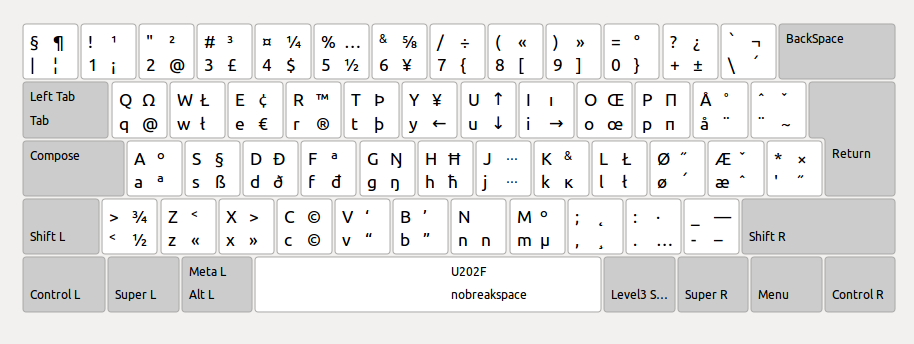My relationship with the Norwegian keyboard has evolved. It began in denial, or I simply didn't know I'd be getting into Norwegian and wasn't willing to put in the effort to learn about the keyboard. I used the double-letter method (vaere, baade) rather than the Norwegian letters (være, både). That naturally didn't last long.
The next stage was better, but still anglo-keyboard-centric. Actually, this is still very useful when I am typing a lot in English and want to insert the odd Norwegian word. It's called the
Dead Key method. It assigns a key that you don't normally use to be a trigger that the key that follows it will be a special character. I use the CapLock key, because I haven't used it for it's real purpose in about ten years. When I want an å, I hit caplock and then
a twice and the å appears. It takes three keystrokes, so it is very inefficient, but gets the job done. Honestly, I used this method just now to type these characters in, so this method is still useful, but once you being typing
in Norwegian instead of
about Norwegian, it gets annoying.
So my next move was to get used to typing on a regular Norwegian keyboard. Now that I'm rather used to it, it is much faster than using the Dead Key method. All the special letters are typed with the pinky finger of the right hand, which is already in good shape from hitting
enter and
delete all day.
I got used to that in a short time and was having a great time smacking out the å¸ æ, and ø. However, I began to have problems. I couldn't find the apostrophe. Generally, you don't need to use apostrophes in Norwegian, but it happens often enough that you don't want to be switching back and forth between language settings. So I went looking for it, willing to spend a minute or two, but no more. I poked out various keys, seeing what came up, but didn't find it. Another time, my minute or two had me opening up a picture of the keyboard from the settings.
There were a lot of apostrophe-like things, but apparently I had reached my time limit (i.e. attention span) for searching and went back to work. Later I googled it and found that I'm not the only person who had trouble finding it. Googling it, I did not find an answer, however. My final search--final because I found it--I asked a Norwegian learners forum directly. That's it, between the
æ and the
Return key. I don't know what took me so long.
Although I'm doing pretty well now with the special characters and apostrophe, characters on the English keyboard that are in different places are still bringing me to a stand-still at times. I suppose I'll get used to it, and it is much safer than learning to drive on the left side of the road when I moved to Japan.
My next goal is to figure out how to make that é without going to
http://norwegian.typeit.org, so I can type kafé and én.









